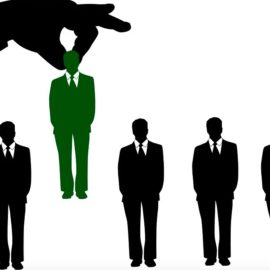

This article is an excerpt from the Shortform book guide to "Secrets of Closing the Sale" by Zig Ziglar. Shortform has the world's best summaries and analyses of books you should be reading.
Like this article? Sign up for a free trial here .
What are the five types of customer objections? Why will a customer not want to purchase your product?
There are many reasons why a customer won’t buy your product. Thankfully, salesman Zig Ziglar says that preparing for these objections can help you address them and convince a customer to buy from you.
Here are the five most common customer objections and how to overcome them.
Objection #1: They Don’t Need the Product
The first of the five types of customer objections is that they don’t need your product. In such cases, the lead often simply doesn’t have enough information to understand how the product will benefit them. Ask questions to glean what they don’t yet understand and then provide the missing information to show the product will improve their life.
(Shortform note: While you may be able to convince a lead who claims they don’t need your product that they do need it, a better approach might be to more effectively filter your leads so you only approach people who very likely do need your product. According to Mike Weinberg in New Sales. Simplified., filter your leads by asking yourself who your current best customers are, what they have in common, and where you can find more such customers.)
Objection #2: They Don’t Want the Product
Ziglar asserts that customers may tell you they don’t want the product (this differs from the first objection in that “wanting” implies an emotional desire while “needing” implies a utilitarian requirement). To address the customer’s lack of desire for the product, make them consider that not buying means missing out on something. For instance, if your customer doesn’t desire your smartwatch, explain that they’re missing out on the ability to share their exercise regimen with their friends.
(Shortform note: In modern parlance, Ziglar is talking about creating a sense of “FOMO” in your customer: the fear of missing out on something good. While this can be an effective way to get your lead to buy, you might also consider creating a fear of losing something the lead already has. This, too, motivates people to act. For instance, you might convince a customer to invest in a new digital organization tool because doing so reduces the chances they’ll lose their current job as a result of disorganization.)
Objection #3: They Don’t Feel It’s Urgent to Buy Now
The third type of customer objection is that they don’t feel they need the product immediately, writes Ziglar. To overcome the customer’s lack of urgency, first agree that there’s no rush, then tell them that if they wait for the perfect moment to make the purchase, they’ll spend all that time without the product when they could be enjoying it now.
(Shortform note: There are many other tactics companies use to create a sense of urgency to buy: Offering a product at a discounted price only for a limited time, using words and phrases that imply urgency, and creating a feeling of scarcity by offering only a limited amount of the product. However, these tactics merely create the illusion of urgency, while Ziglar’s approach seeks to convince the customer there truly is urgency.)
Objection #4: They Think the Product is Too Expensive
Many customers pass because they don’t feel the cost of the product reflects its value, asserts Ziglar. Therefore, point out the value of your product by showing that it’s more satisfying and higher quality than a cheaper product. For example, you might explain that your smartwatch is more expensive than competitors’ because of its superior battery life, which lets you use it more before recharging.
(Shortform note: The act of showing how your product provides greater value than competitors’ is called differentiating your product. According to A.G. Lafley and Roger Martin in Playing to Win, this means creating a product that appeals to consumers because it’s higher quality or has better branding. Lafley and Martin point out an added benefit of differentiating, beyond allowing you to make the immediate sale: It creates brand loyalty, which makes you and your company more resilient to passing market trends.)
Objection #5: They Don’t Trust You
The last type of customer objection is that they won’t buy because they might not trust you. This is the hardest objection to overcome, and it’s best to preempt it by adhering to the principles and developing the qualities of a successful salesperson. It’s nearly impossible to change the mind of someone who doesn’t trust you.

———End of Preview———
Like what you just read? Read the rest of the world's best book summary and analysis of Zig Ziglar's "Secrets of Closing the Sale" at Shortform .
Here's what you'll find in our full Secrets of Closing the Sale summary :
- What qualities you must develop as a salesperson
- The six common customer behaviors you must understand
- Five rules for crafting an effective sales pitch






